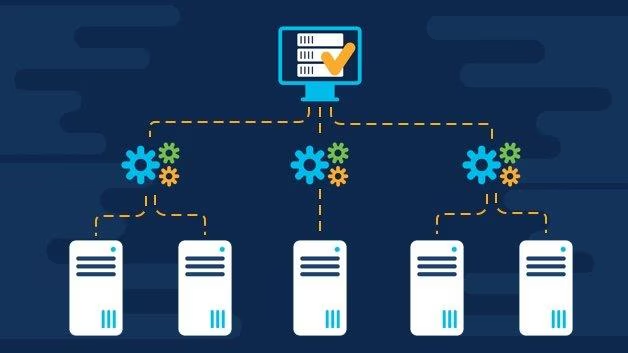- Extended Delivery Cycles: Quarterly delivery intervals delay the rollout of critical business features.
- Manual Deployment Pitfalls: Reliance on manual processes introduces significant human dependency and lacks a robust rollback strategy.
- Extended Delivery Cycles: Quarterly delivery intervals delay the rollout of critical business features.
- Outdated Monolithic Architecture: Legacy Oracle Forms and Oracle Database limit agility and modernization efforts.
- Unplanned Downtime: Unscheduled outages lead to substantial business disruptions and financial losses.
- Scalability Concerns: The system struggles to scale effectively as user numbers increase with new office expansions.
Overview
A leading shipping company in the US having large ERP using old generation architecture and following the waterfall method in delivery wanted to change to modern architecture & agile based delivery methodology.

Challenges

Solutions
- Agile Methodology Adoption: Transitioned to a four-week delivery cycle, enhancing agility and responsiveness to business needs. Leveraged Jira for comprehensive project management and tracking.
- DevOps Implementation: Utilized Bamboo for seamless integration and deployment. Employed Selenium for automated testing, significantly improving quality control and minimizing manual testing and deployment dependencies.
- Modern Microservice Architecture: Adopted Spring Boot and container technology to build a scalable and flexible microservice architecture.
- Cloud Migration to AWS: Migrated applications to the AWS Cloud, utilizing container technology for elastic scalability to meet varying demand.
- Cost Optimization on AWS: Implemented various cost-saving strategies, leveraging container technology to effectively manage and reduce operational expenses on the AWS platform

Benefits
- Enhanced Feature Rollout Agility: Accelerate the introduction of new business features with increased efficiency.
- Improved Resilience: Proactively prepared for unexpected scenarios, ensuring business continuity.
- Increased Quality and Visibility: Minimized manual efforts through automation, enhancing quality control and transparency.
- Minimized Downtime: Reduced downtime, safeguarding valuable business hours and productivity.
- Cost Efficiency with Cloud Deployment: Achieved significant cost savings through optimized cloud-based solutions.

CONCLUSION
By leveraging Enterprise Architecture Services, the shipping company has significantly enhanced agility, achieved remarkable cost savings, ensured delivery excellence, and is well-prepared for the unknown.

 Microservices
Microservices Shipping & Logistics
Shipping & Logistics